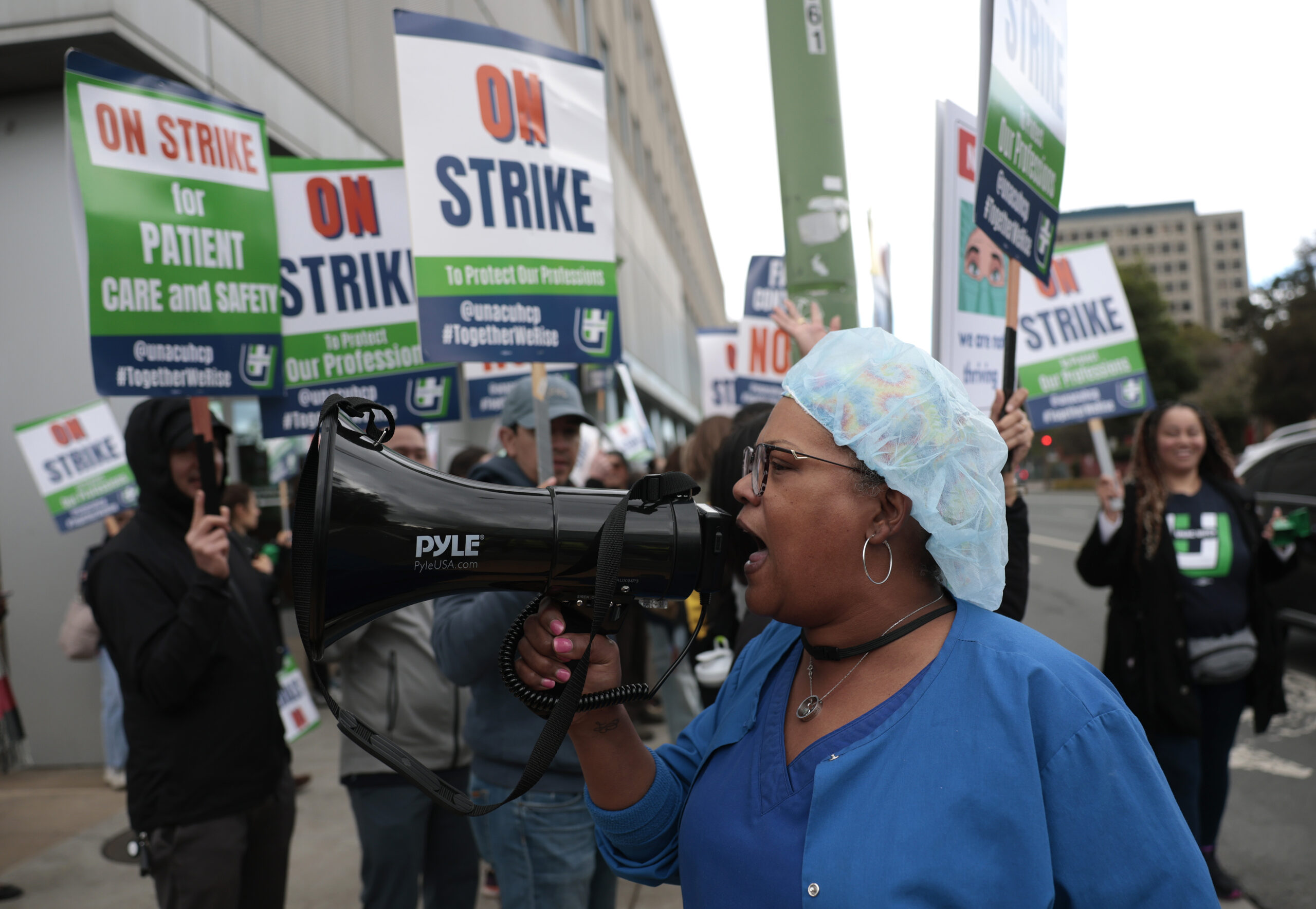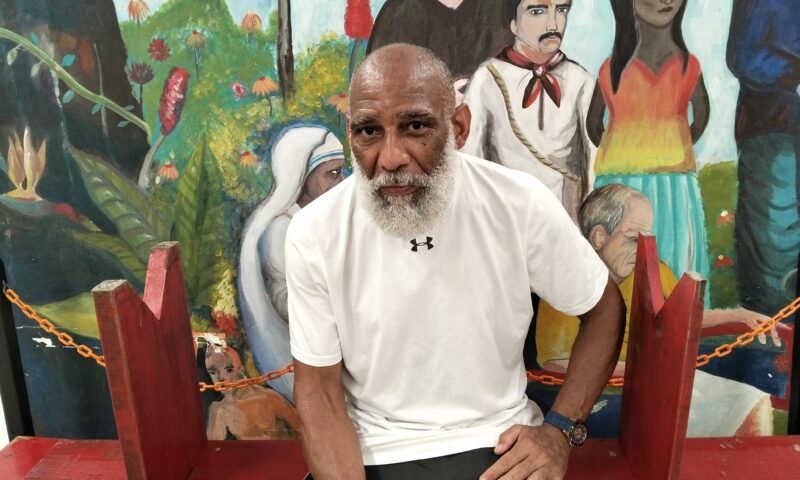The nation’s health care workers want to be paid fairly, but that’s hardly news — you could say the same for any worker group in the United States. So what is driving the deep dissatisfaction among so many nurses, physicians, assistants and therapists?
Increasingly, the answer is simple: time and resources. In my years interviewing those on the front lines of America’s struggle to care for its own residents, the same theme emerges: Health care workers consistently report that inadequate staffing and lack of time to spend with their patients have led them to conclude that their employers no longer strive to deliver top-level care — even at health care organizations known for such quality.
“I don’t know why they choose not to do it,” said Nicole Jimenez, a registered nurse with Kaiser Permanente in California. “One of their tenets is, ‘Best patient care every time.’ Knowing that they have the resources to make that difference but don’t do it is — it’s sad. It’s frustrating.”
The recent contract-related walkout by 31,000 Kaiser employees in California, Oregon and Hawaii almost perfectly illustrates the disconnect workers feel. In a statement about the five-day strike, Kaiser officials declared that “the heart of this negotiation is a dispute about wages.”
Many Kaiser workers, by contrast, immediately pointed to the lack of staffing as the primary reason they walked. While Kaiser officials say they’re working within state-mandated guidelines, nurses and other caregivers say the company chronically understaffs its facilities despite having agreed to specific ratios during previous contract negotiations — and patient care suffers as a result.
Further, they say, Kaiser has in recent years begun moving away from a longstanding model of shared decision-making among physicians, managers and employees. Dubbed the Labor Management Partnership, that model has been central to Kaiser’s success, workers say, with their input actively and continuously solicited.
“We dedicate our lives to caring for our patients, and yet at the end of a day we feel like we didn’t do a good enough job of it,” said Kim Mullen, an RN who works primarily with stroke victims at Kaiser’s South Bay Medical Center in Harbor City, near Long Beach. “It’s not because we don’t have phenomenal registered nurses and assistants. It’s because we’re not staffed appropriately.”
* * *
On Oct. 14, Jimenez and Mullen joined the short-term strike, which was aimed at focusing public attention on the negotiation stalemate between Kaiser and the Alliance of Health Care Unions, a coalition of labor organizations led by the United Nurses Associations of California/Union of Health Care Professionals. (Disclosure: The UNAC/UHCP is a financial supporter of Capital & Main.)
Kaiser is a major player in the West. The health giant has more than 9.5 million “members” (its term for patients) in California, 612,000 in Oregon and southern Washington state, and 271,000 in Hawaii. Overall, the organization claims more than 12.6 million members nationally.
To be sure, there’s a money component to the current bargaining, which has been going on since May, in the run-up to the expiration of the previous contract at the end of September. The Alliance is seeking a 25% pay increase over four years, which its negotiators describe as a response both to recent inflation and to their accepting a 10% raise over four years in their previous contract. Over the course of that deal, which was negotiated in the middle of the Covid-19 pandemic, workers’ buying power declined. Kaiser’s offer has remained steady at 21.5%.
In a statement provided by Kaiser communications manager Vincent Staupe, the company described the unions’ wage proposal as “out of step with today’s economic realities,” and claimed the resulting increase in payroll would “lead to higher rates for members and customers, with serious market implications.”
It’s hard to imagine that the two sides can’t bridge a 3.5% difference in wages spread over four years. The Alliance’s other requests, however, are a key element of the stalemate. The union negotiators want stronger consequences when Kaiser ignores agreed-upon staffing levels, and they are seeking more say on how time spent with patients is scheduled.
Kaiser, the Alliance negotiators say, has balked at those requests.
“As a nurse, from the minute you clock in, it’s like you have a 52-card deck of things you need to do in order to care for your patients,” said Mullen, who is part of the Alliance’s bargaining team. “And as your day progresses, when you don’t have adequate staff or help, more and more cards are added to that deck. At the end of the day, although you’ve worked nonstop, you feel defeated — and you worry for the patients you’re caring for.”
* * *
Physicians, therapists, nurses and other workers have pushed back against what they see as Kaiser’s inadequate staffing. In the past three years, mental health care workers in both Northern and Southern California have staged strikes — one lasting nearly 200 days — to wrench concessions from Kaiser on basic issues such as having enough staff and time to adequately care for patients.
The California Department of Managed Health Care has repeatedly fined Kaiser for its deficient mental health care services, and in 2023 it negotiated a $200 million settlement with the company that included a record $50 million fine and a $150 million investment toward addressing the shortcomings in Kaiser’s mental health care.
Mullen said that Kaiser agreed in its 2021 contract to staffing ratios in several areas of care that are better than what the state requires. But, she said, those ratios are routinely ignored.
“The issue first and foremost in my heart is the lack of safe staffing,” added Jimenez, an intensive care nurse whose work takes her to all departments within Kaiser’s facility in Ontario, California. “It has not changed for years. We’re stretched so thin that it’s unsafe for the patients and the nurses, and we’re seeing nurses just get burned out, leaving for jobs that don’t require bedside care.”
Kaiser officials did not respond to specific questions about the staffing levels. In its statement, the company said, “Kaiser Permanente meets — and often exceeds — [state-]mandated nurse-to-patient ratios and staffing standards.”
* * *
On its website, Kaiser Permanente describes itself as “one of the nation’s largest not-for-profit health plans.” That designation applies strictly to its health insurance arm and the corporation that owns Kaiser’s hospitals.
The company’s Permanente Medical Groups, the vast physician organizations that actually provide the care to patients, are for-profit ventures — and they are powerhouses.
Kaiser and its subsidiaries reported net income (profit) of $3.3 billion for the second quarter of 2025 alone, a $1.2 billion increase over the previous year. The company had nearly $13 billion in net income in 2024, and it’s sitting on $66 billion in reserves, a figure that has grown by half in just the past four years.
And the organization is growing. In 2023, Kaiser formed a subsidiary, Risant Health, whose sole function is to acquire other health systems across the country. It has already added two such companies, with the goal of acquiring four or five more within the next few years. Risant alone could drive annual revenue of $30 billion to $35 billion.
The takeaway for Kaiser’s workers is that resources are not an issue. The company, they believe, could improve staffing levels — but it’s cheaper not to.
In its statement concerning the October strike, Kaiser described the walkout as unnecessary, adding, “It is designed to disrupt the lives of our patients — the very people we are all here to serve.”
“It’s just the opposite of that,” said Mullen, the nurse in Harbor City. “We’re doing it so that we can care for our patients the way they need to be cared for.” That is a message from its workers that Kaiser has consistently failed to hear.
Copyright Capital & Main 2025


 StrandedNovember 25, 2025
StrandedNovember 25, 2025
 Column - State of InequalityNovember 28, 2025
Column - State of InequalityNovember 28, 2025
 The SlickNovember 24, 2025
The SlickNovember 24, 2025
 Striking BackDecember 4, 2025
Striking BackDecember 4, 2025
 Latest NewsDecember 8, 2025
Latest NewsDecember 8, 2025
 Latest NewsNovember 26, 2025
Latest NewsNovember 26, 2025
 The SlickDecember 2, 2025
The SlickDecember 2, 2025
 Latest NewsDecember 1, 2025
Latest NewsDecember 1, 2025

